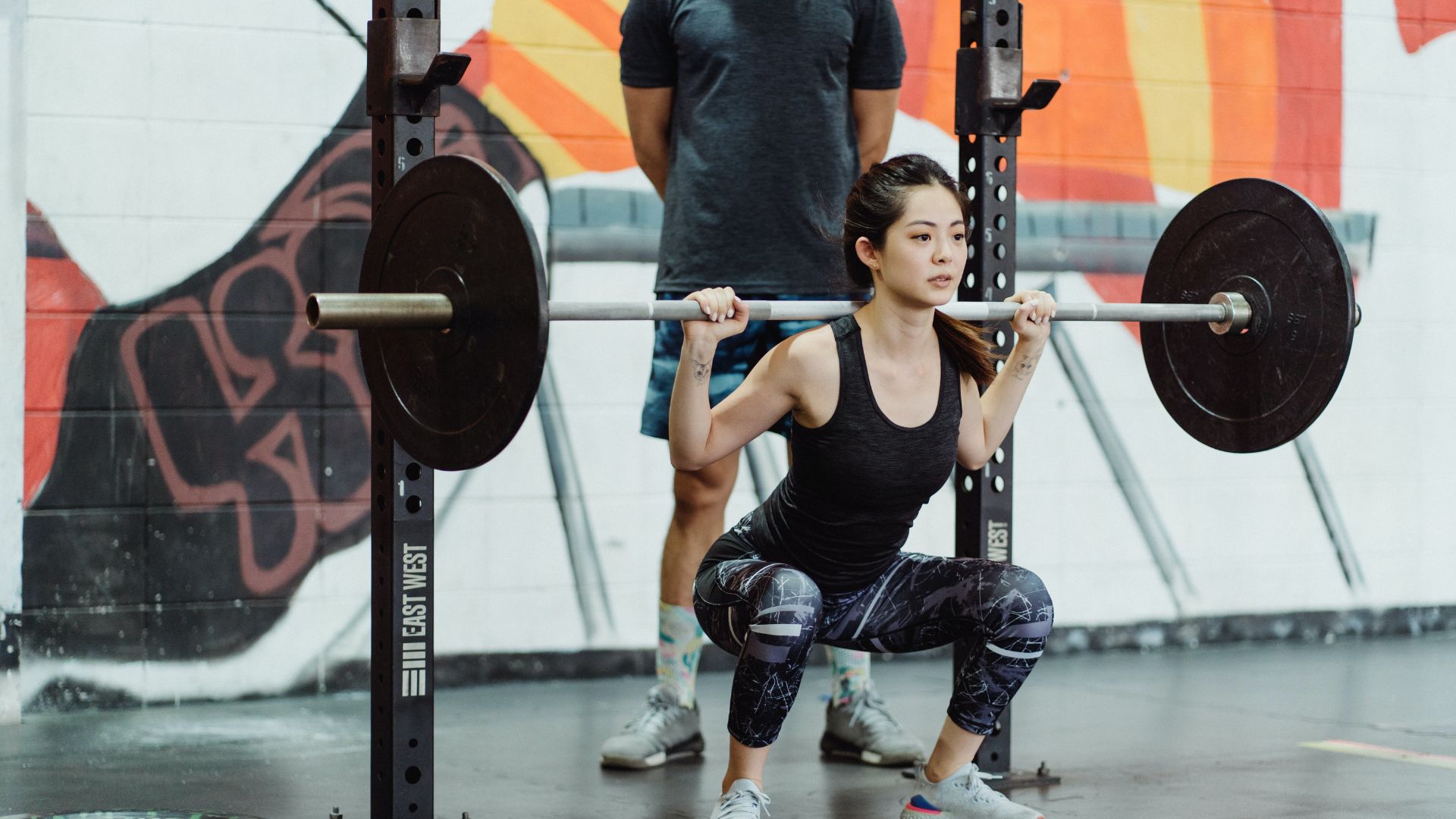Are you wondering how much weight you should squat if you weigh 119 pounds? Squatting is a popular exercise that works your lower body, including your glutes, hamstrings, and quads.
However, it can be confusing to figure out how much weight you should be lifting, especially if you’re new to strength training.
In this article, we’ll answer the question “How Much Should I Squat if I Weigh 119?” and provide you with all the information you need to get started.
The amount of weight you should squat depends on several factors, such as your fitness level, experience, and form. As a general guideline, if you weigh 119 pounds, you should aim to squat a weight that is challenging but still manageable for your current fitness level.
A good starting point for beginners is to squat with a weight that is roughly 50-70% of their body weight. So for someone who weighs 119 pounds, this would mean squatting between 60 and 83 pounds.
However, it’s important to note that proper form is crucial when performing any exercise, especially squats. So before adding weight, focus on mastering your form with bodyweight squats or lighter weights. Gradually increase the weight as your form and strength improve.
Also, keep in mind that everyone’s fitness journey is unique, and it’s important to listen to your body and progress at a pace that feels comfortable and safe for you.
It depends on your fitness level and experience.
The amount of weight you should squat depends on various factors such as how fit you are, how much experience you have with squatting, and how well you are able to maintain proper form during the exercise.
As a general rule, if you weigh 119 pounds, you should aim to squat a weight that is challenging for you but still within your capabilities based on your current fitness level.
It’s important to keep in mind that squatting with too much weight can put you at risk of injury, while squatting with too little weight may not provide enough of a challenge to help you progress.
Therefore, it’s important to find the right balance between challenging yourself and staying safe.
When determining the weight you should squat, it’s a good idea to start with a weight that is roughly 50-70% of your body weight. From there, you can gradually increase the weight as you become more experienced and feel comfortable doing so.
The most important thing is to focus on maintaining proper form throughout the exercise. This will help you to avoid injury and ensure that you are getting the most out of your squatting workouts.
Here is a chart table that shows recommended weight ranges for squatting based on body weight and fitness level:
| Fitness Level | Body Weight | 50% of Body Weight | 70% of Body Weight |
|---|---|---|---|
| Beginner | 119 lbs | 60 lbs | 83 lbs |
| Intermediate | 119 lbs | 83 lbs | 104 lbs |
| Advanced | 119 lbs | 104 lbs | 119 lbs |
It’s important to remember that these are just general guidelines, and the weight you should squat ultimately depends on your individual fitness level, experience, and ability to maintain proper form.
Start with a weight that challenges you but is still within your capabilities based on your current fitness level, and gradually increase the weight as you become more experienced and feel comfortable doing so.
Always prioritize proper form to avoid injury and get the most out of your squatting workouts.
Aim for roughly 50-70% of your body weight.
For beginners, a good place to start with squatting is to use a weight that is approximately 50-70% of their body weight.
Therefore, if you weigh 119 pounds, a recommended weight range to start with would be between 60 and 83 pounds.
This weight range is challenging enough to provide a good workout while also being safe and manageable for someone who is new to squatting.
As you progress and gain more experience, you can gradually increase the weight to continue challenging yourself and building strength.
here is a chart table that shows the recommended weight range for beginners to start squatting based on their body weight:
| Body Weight | 50% of Body Weight | 70% of Body Weight |
|---|---|---|
| 100 lbs | 50 lbs | 70 lbs |
| 120 lbs | 60 lbs | 84 lbs |
| 140 lbs | 70 lbs | 98 lbs |
| 160 lbs | 80 lbs | 112 lbs |
| 180 lbs | 90 lbs | 126 lbs |
| 200 lbs | 100 lbs | 140 lbs |
Remember, these are only general guidelines, and the weight you should squat ultimately depends on your individual fitness level and experience. Always prioritize proper form and listen to your body when determining the amount of weight you should squat.

Proper form is crucial.
Maintaining proper form during any exercise is essential for avoiding injury and ensuring that you get the most benefit from the exercise.
This is particularly true for squats, as they can be challenging to perform correctly. Therefore, before adding weight to your squatting routine, it’s important to focus on mastering your form first.
One way to do this is by practicing bodyweight squats or using lighter weights.
By focusing on your form without the added resistance of heavier weights, you can concentrate on developing the proper technique and movement patterns needed to perform the exercise safely and effectively.
Once you feel confident in your form and have built up some strength, you can gradually increase the weight you use during your squats.
By doing this gradually over time, you can continue to challenge yourself while minimizing the risk of injury.
Remember, proper form is always a priority over using heavy weights, and it’s essential to maintain good form throughout each rep to get the most out of your squatting workouts.
Here is a chart table that outlines the key points to keep in mind when performing squats with proper form:
| Proper Form for Squats |
|---|
| Keep your feet shoulder-width apart |
| Keep your chest up and your core engaged |
| Lower your body by bending your knees and pushing your hips back |
| Keep your knees behind your toes |
| Lower your body until your thighs are parallel to the ground |
| Push through your heels and straighten your legs to stand back up |
| Keep your back straight and avoid leaning forward or rounding your back |
| Breathe in as you lower your body and exhale as you stand back up |
Remember to start with lighter weights or bodyweight squats to focus on mastering proper form before gradually increasing the weight you use during your squats.
By doing this, you can ensure that you perform the exercise safely and effectively while minimizing the risk of injury.
Listen to your body and progress.
It’s important to remember that everyone’s fitness journey is unique, and what works for one person may not work for another.
Therefore, it’s essential to listen to your body and progress at a pace that feels comfortable and safe for you.
While it can be tempting to compare yourself to others and push yourself too hard, it’s important to prioritize your own well-being and fitness goals.
This may mean starting with lighter weights or taking more time to master your form before progressing to heavier weights.
It’s also important to pay attention to how your body feels during and after your workouts. If you experience pain or discomfort, it may be a sign that you need to adjust your form or reduce the weight you are using.
On the other hand, if you feel like you could handle more weight, you can gradually increase the weight as you continue to progress.
Remember, the most important thing is to maintain a consistent and sustainable workout routine that supports your overall health and fitness goals.
Here’s a chart table on “Listen to your body and progress” that may help:
| Tips for Listening to Your Body and Progressing |
|---|
| 1. Start with lighter weights or exercises that feel comfortable and safe for you. |
| 2. Take time to master your form before increasing weight or intensity. |
| 3. Pay attention to how your body feels during and after your workouts. |
| 4. Reduce weight or intensity if you experience pain or discomfort. |
| 5. Gradually increase weight or intensity if you feel like you could handle more. |
| 6. Prioritize your own well-being and fitness goals over comparing yourself to others. |
| 7. Maintain a consistent and sustainable workout routine that supports your overall health and fitness goals. |
Here is a chart table that shows recommended weight ranges for squatting based on body weight:
| Body Weight | 50% of Body Weight | 70% of Body Weight |
|---|---|---|
| 100 lbs | 50 lbs | 70 lbs |
| 120 lbs | 60 lbs | 84 lbs |
| 140 lbs | 70 lbs | 98 lbs |
| 160 lbs | 80 lbs | 112 lbs |
| 180 lbs | 90 lbs | 126 lbs |
| 200 lbs | 100 lbs | 140 lbs |
Please keep in mind that these are only general guidelines and that it’s essential to focus on maintaining proper form and listening to your body when determining the amount of weight you should squat.
Conclusion
In conclusion, determining the amount of weight you should squat depends on various factors such as your fitness level, experience, and form.
For beginners, a good starting point is to use a weight that is approximately 50-70% of their body weight. However, it’s important to focus on maintaining proper form throughout each rep, which may mean starting with lighter weights or bodyweight squats until you feel confident in your form.
Additionally, it’s important to listen to your body and progress at a pace that feels comfortable and safe for you.
Everyone’s fitness journey is unique, and it’s essential to prioritize your own well-being and fitness goals. By focusing on proper form, gradually increasing weight, and listening to your body, you can continue to challenge yourself and make progress toward your fitness goals.

Hey there, it’s Mike Rrsq, the Editor-in-Chief over at Jsquat.com, and I’m absolutely obsessed with all things squat fitness! I’ve been lucky enough to get some serious recognition for my work in this field. With a solid background in the fitness and wellness industry, I’ve been there right from the get-go, helping shape this website into what it is today.
You see, I’m not just the boss around here; I’m also a passionate contributor. I love sharing my insights through my articles, and trust me, they’re not your run-of-the-mill stuff. Each piece I write is a labor of love, filled with my expertise and real-world experience in the fitness universe. So, if you’re into fitness and looking for some inspiration, you’re in the right place!

